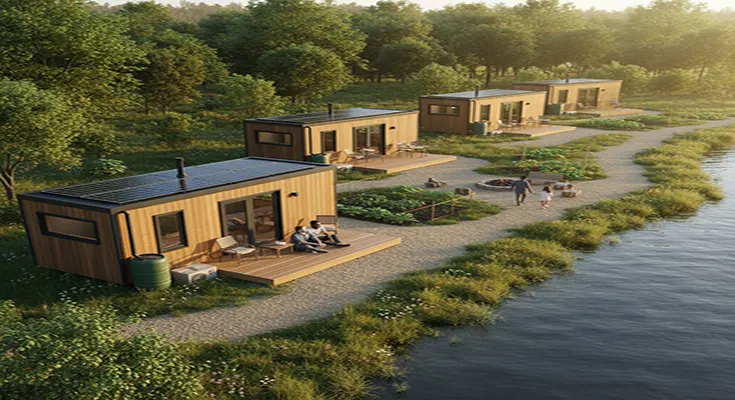The tiny home movement is evolving from a niche trend into a powerful sector of the real estate market, driven by demand for affordability, simplicity, and sustainability.1 For investors, developing and managing eco-friendly tiny home developments offers a unique opportunity to generate returns while contributing positively to environmental goals.
This business plan focuses on the strategic investment and specialized management required to succeed in this green, compact housing segment.
Phase 1: Strategic Investment and Acquisition
The profitability of a tiny home development hinges on smart land acquisition and adherence to specific environmental standards.
1. Target Land Acquisition and Zoning
- Identify Appropriate Zoning: This is the most challenging initial step. Many municipalities restrict tiny homes as permanent dwellings, often classifying them as recreational vehicles (RVs). Focus your search on land zoned for RV parks, mobile home parks, or Planned Unit Developments (PUDs) that allow for smaller-scale, permanent structures.
- Assess Infrastructure and Utilities: Look for land that minimizes development costs. Proximity to existing utility hookups (water, sewer/septic, and electricity) is crucial for keeping your initial capital expenditure low.
- Evaluate Environmental Impact: Choose sites that require minimal grading or tree removal. A truly eco-friendly development utilizes the existing topography and natural features to reduce disturbance and manage stormwater runoff naturally.
2. Specialized Eco-Friendly Design
Your investment must prioritize sustainability features that appeal to the target demographic (millennials, minimalists, and retirees).
- The Homes: Partner with builders who specialize in Energy Star or Passive House standards. Focus on highly efficient insulation, high-efficiency windows, and non-toxic, locally sourced building materials to reduce the overall carbon footprint.
- Infrastructure: Integrate decentralized, sustainable systems. This includes shared composting facilities, rainwater harvesting systems for irrigation, and community solar arrays to offset energy costs for common areas.
- Site Layout: Design the site to maximize passive solar gain in winter and natural shading in summer, utilizing native landscaping to reduce water demand.
Phase 2: Specialized Management and Operations
Managing a tiny home community is fundamentally different from managing traditional apartment complexes or RV parks. It requires a focus on community culture and decentralized utility monitoring.
3. Establish a Green Management Policy
Your management ethos must align with the eco-friendly mission to attract and retain the desired residents.
- Utility Monitoring: Implement sub-metering for water and electricity for each home. This promotes resource awareness and allows you to reward low-consumption tenants, reinforcing the sustainability mission.
- Waste Management System: Set up a robust, multi-stream recycling program, including dedicated bins for composting and specialized waste (e.g., batteries, e-waste). Offer incentives for residents who consistently meet recycling targets.
- Community Gardens and Shared Resources: Designate spaces for community gardens, tool shares, and a communal laundry facility with high-efficiency appliances.2 These features enhance the eco-friendly lifestyle and foster community cohesion.
4. The Financial Model: Revenue Streams
For a tiny home development, revenue typically comes from three sources:
- Ground Lease/Lot Rent: The primary income stream, where residents own the structure but pay a monthly fee for the land, utilities access, and community amenities.
- Utility Pass-Through: Charging residents for their specific metered utility usage, plus a small administrative fee.
- Ancillary Income: Revenue from shared amenities like community center rentals, storage unit fees, or high-speed internet service access fees.
5. Cultivating the Community Culture
The “eco-friendly” aspect is as much about social sustainability as it is about environmental systems.
- Clear Community Guidelines: Establish rules that prioritize sustainability, such as limitations on exterior storage, guidance on water conservation, and expectations for participation in community upkeep (e.g., maintaining shared green spaces).
- Educational Programming: Host regular workshops on sustainable living, composting, and energy-saving practices. This not only builds community but reinforces the value proposition of the development.
Key to Success: Mission-Driven Profitability
Investing in and managing eco-friendly tiny home developments is a long-term strategy. While the initial costs for sustainable systems (solar, advanced septic) may be higher, the benefits—including lower ongoing utility costs, premium rental rates, and low resident turnover—quickly drive greater profitability and a positive brand reputation. By integrating a sustainable mission into every aspect of the business, from design to daily management, investors can tap into the growing market for housing that is both financially and environmentally responsible.





